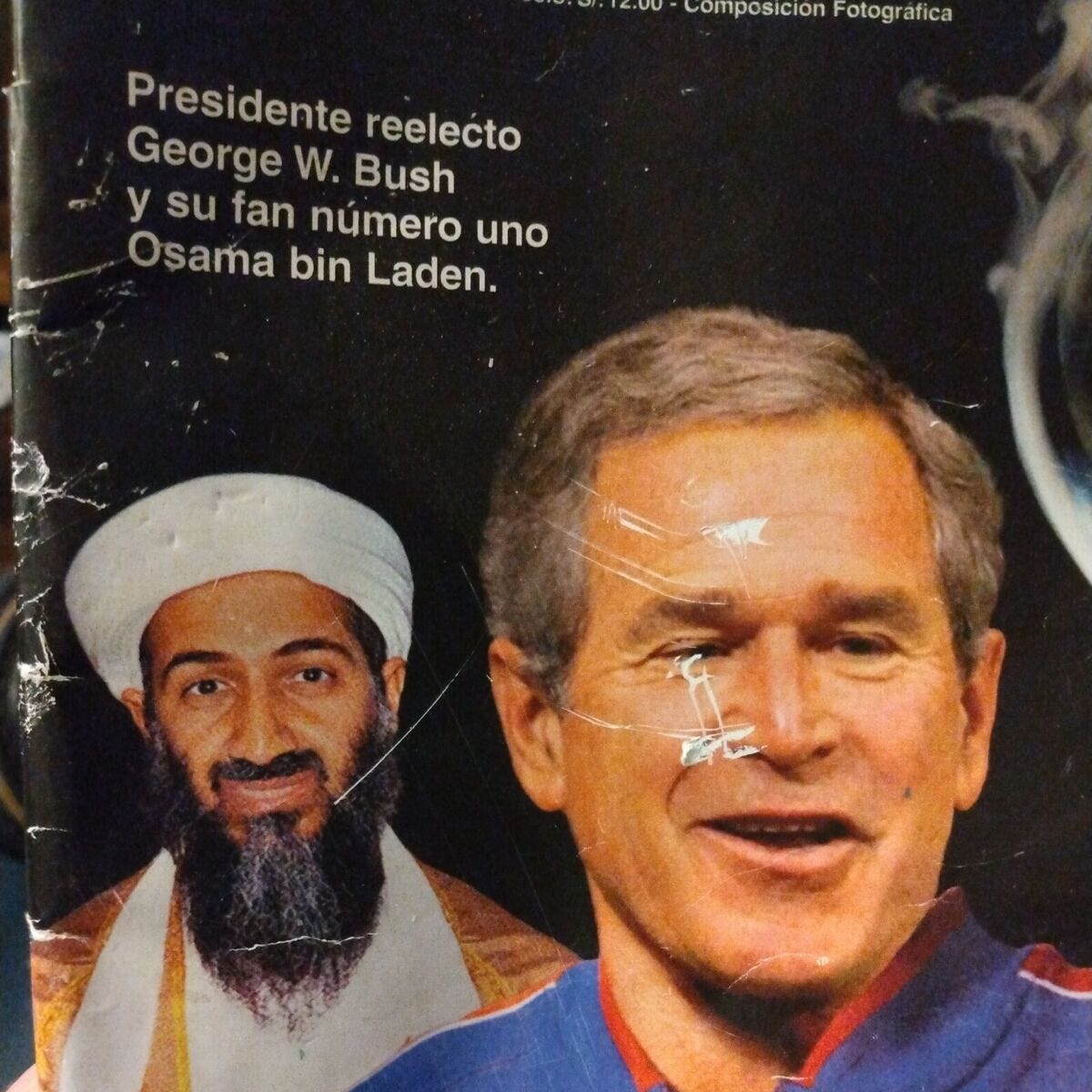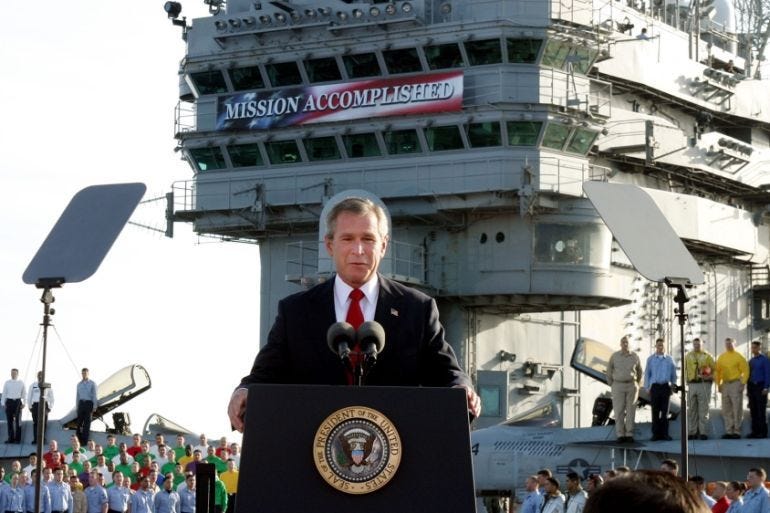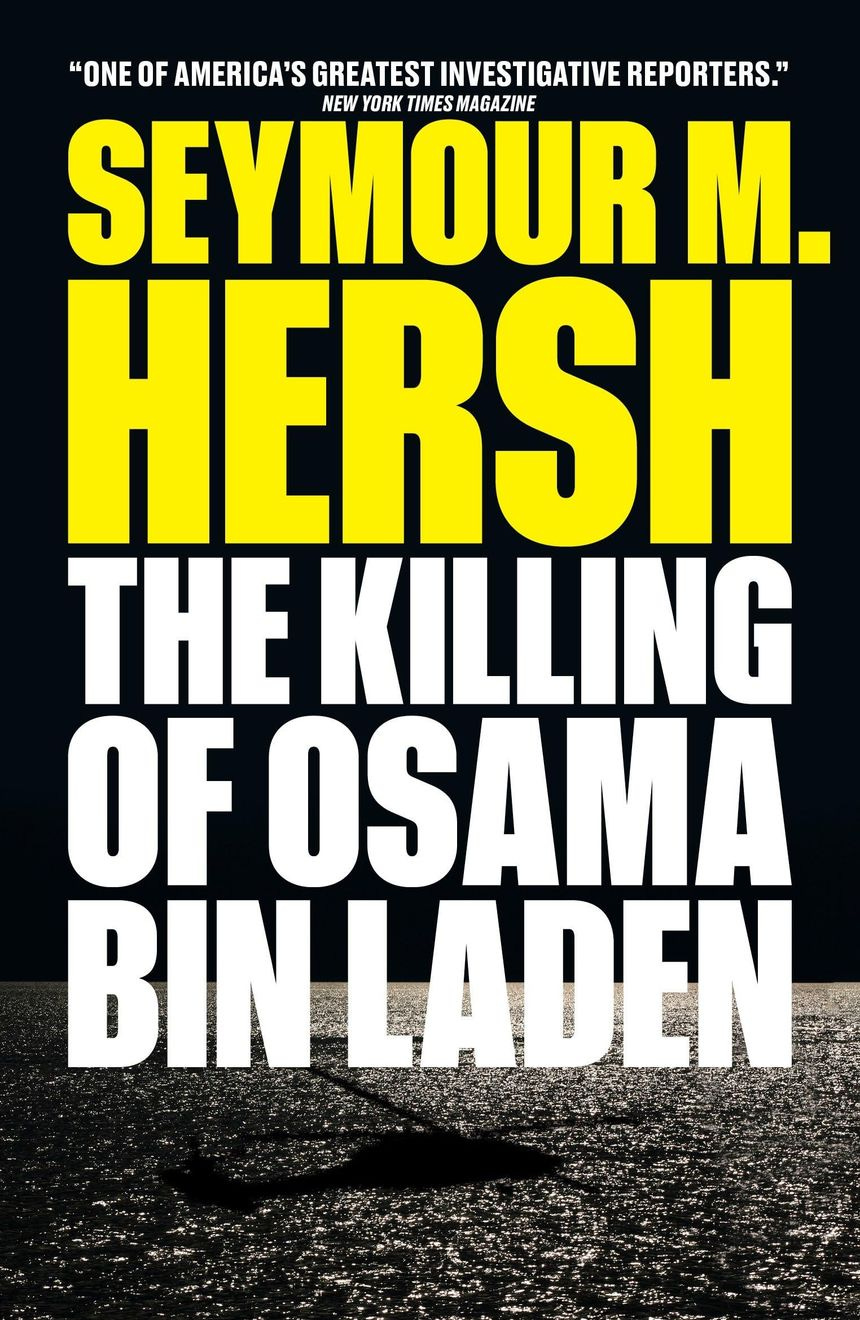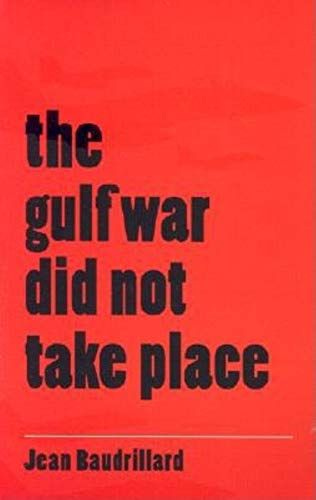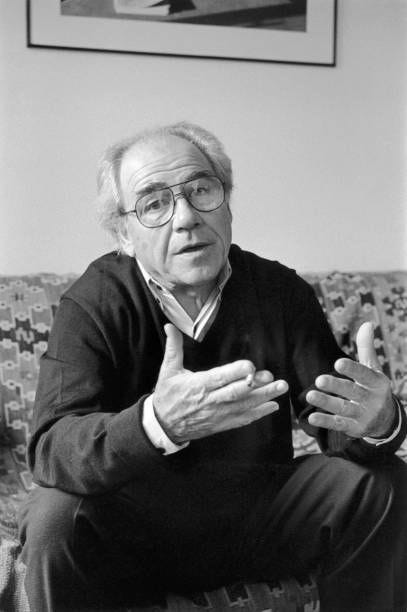HIDE AND SEEK
Terrorism was crime with political aims, a serious threat to law and order, not to national security. Therefore, law enforcement and the judiciary, not the military, orchestrated the fight against armed organizations. Bush [II] disregarded these notions and strategies. Preferring to launch a war in faraway lands, he granted al-Qaeda the status of enemy. Behind this arrogance lay the US administration’s ulterior motives, goals fundamentally different from those presented to the public and publicized by the media as the protection of American soil. [i]
-Loretta Napoleoni, Terrorism and the Economy
Set up: Who is “seeking” and who is “hiding”? … Ready or not, here I come!
Clinical explanation: Mr. White is in a monogamous relationship with Mrs. White, and he begins a secretive “friendship” with a woman. In the process, Mr. White conceals his loneliness, insecurities, and lack of intimate connection. It is unclear at this point who is “It” in the game and on the surface it appears to be a version of Cops & Robbers: Mr. White is clearly hiding the relationship from Mrs. White because the payoff is based on her seeking and Mr. White being “busted.” However, Mrs. White has been hiding her insecurities for years if not decades by constantly providing parental thinking for Mr. White. The game evolves into Mr. White and Miss Green having a secretive “emotional affair” and/or sexual relationship. Their communications and relationship status are actively hidden from the unknowing Mrs. White. Mr. White is clearly hiding, and Miss Green is usually seeking.
Mr. White’s acts are meant to provoke destabilization in the monogamous relationship. Therefore, Mr. White’s triangulation of Miss Green is a passive push for regime change. He is baiting Mrs. White to “Come get me!” He wants to be sought out by Mrs. White. Eventually, Mrs. White has an intuition that Mr. White is involved in a covert operation. She worries that he does not love her or wants a divorce or separation (regime change). Mrs. White utilizes a fourth role in the game, which is not played by a person. The technological Connection role is the capability for digital surveillance via online corporate platforms.
The attitude of Mrs. White is to protect “her soil” so-to-speak. To do this, she seeks evidence of an attack by searching Mr. White’s smartphone, including digital applications, social media profiles, etc. Mrs. White will review smartphone bills, search deleted text-based messages, scour credit card statements, examine photos, or simply glance at Mr. White’s phone when a message arrives from the “friend.” Sometimes this “discovery” reveals that Mrs. White has been playing her own game of Courtroom. At any rate, Mrs. White views Mr. White’s hiding as an act of domestic terrorism. Her internal justification is the same as the neoconservatives lie regarding the “war on terror.” The lie is, “We must, because what if there is another [Pearl Harbor, 9/11] attack?”
Recall, the U.S. “war on terror” authorized total government surveillance via the PATRIOT Act. The acronym stands for Providing Appropriate Tools Required to Intercept and Obstruct Terrorism. The Act justified the monitoring of U.S. citizens—not as innocents—but as “traders” (cheaters). Journalist Max Blumenthal notes how the PATRIOT Act gave the executive branch of the government “unprecedented wartime powers to investigate and prosecute Americans.” [i] The legality of the act allows for all global transactions of the U.S. dollar to be monitored, and the transactions are stored along with all of our digital data in government databases.

In the War game version of H&S, Mrs. White tirelessly seeks answers to confirm the suspicion by gaining access to Mr. White’s phone and/or computer. When Mrs. White finds the incriminating proof, she chastises and punishes Mr. White. In connection with the PATRIOT Act, Mrs. White repeatedly reads Mr. White the RIOT Act for his antisocial behavior: she is now using inappropriate tools Required to Intercept and Obstruct Trickery (RIOT). Mrs. White repeatedly collects digital forms of injustice against him in order to then read him the RIOT Act (Now I’ve Got You, SOB!). Therefore, Mrs. White’s actions are meant to obstruct the “terror” of infidelity by using surveillance technology, i.e., monitoring all his digital and physical activity.
Original game: Children invite a fun game of hide-and-seek with sincerity: “Let’s play…Come find me!” White is the “seeker” in the game, so they are “It.” White knows they are searching for Black and Black knows to hide. The objective of the game is to be found. Despite this, Black is playfully surprised when White discovers them. This jubilation is the shared emotional payoff of the game. If the one seeking (White) takes too long or finds Black too quickly, the game lacks the effect (and emotion) that is required. The joy of a children’s game of hide-and-seek is that everyone understands and follows the rules of the game.
In the supremacist version of Hide & Seek it is unclear who is “It” and who is “hiding.” Instead of one person “seeking” and others “hiding,” both parties are seeking and hiding with their own ulterior motives. This creates the fog of war. In the ancient Chinese military treatise The Art of War, the general Sun Tzu notes how “All warfare is based on deception.” This is never truer than in the multi-handed War game version of Hide & Seek.
For example, the psychopathic Mr. White demands love from the overly dependent Mrs. White. Mr. White will attempt to “kill” the relationship (regime change with Miss Green) to force Mrs. White to seek him. In return, the vengeful Mrs. White hides her own insecurities and focuses on seeking and controlling Mr. White. Mrs. White may be honest in the fact that they do not trust his love and devotion to them. The con is that Mrs. White did not trust Mr. White to begin with, which keeps the insecure Mrs. White in the “seeking” role. This relational symbiosis permits Mr. White to continue his hiding, e.g., not disclosing their motive for the affair.
For moral reasons, Mr. White is often afraid of divorce, so H&S is counterphobic. He uses the lack of sexual intimacy as an internal justification for the attempted coup d'état. Mr. White knows Mrs. White will not leave and, in that sense, as with the Kick Me game, he becomes increasingly provocative in their behavior leading up to the affair, e.g., grinding on the dance floor with women, flashing his genitalia to others, sexting, etc.
Thesis: If twentieth-century fascists were “apologists of violence” [ii] then twenty-first century iFascism is understood as apologists of surveillance (see Notes on Fascism). The thesis of the marital version of Hide & Seek (H&S) is based on Mr. White’s motivation: “Come get me! / I have nothing to hide.” The military and governmental version is “Please hide in plain sight / so I can surveil and kill you!” In both cases, there is an ulterior motive for destabilization, potential regime change, and totalized surveillance. These motives for totalitarian control are disguised as rational forms of trust building and security.
In the “war on terror” version of H&S game it is not clear who is hiding and who is seeking. For example, Barack Obama told a fictitious story (hiding) about Osama bin Laden hiding, so the U.S. could seek out and kill him. Bin Laden was ostensibly sought out using “intelligence” sources. In fact, bin Laden was not hiding nor was he seeking violence via a terror cell. Bin Laden was imprisoned (hidden) by Pakistan—who was holding him as political leverage—in a compound without internet. His financial Connection role was fulfilled by Saudi Arabia. Both countries were seeking military aid packages from the U.S.
Obama hid (lied) about a “fire fight” between the Navy seals and members of the compound during the assassination. Bin Laden was an unarmed invalid who did not use his wives as a “human shield.” The operation was a quid pro quo with Pakistan who wanted to continue the flow of military aid packages (antiterrorism funding) from Washington. [iii] Despite Barack Obama’s speech, bin Laden was not “hiding,” and the CIA did not “seek” him via intelligence. Functionally, the aim of the H&S game is to destabilize or harness power and control, e.g., establish a second presidential term for Obama in 2012 by playing the Influencer game.
“The cause of securing our country is not complete. But tonight, we are once again reminded that America can do whatever we set our mind to [e.g., assassinating unarmed people and lying about it]. That is the story of our history, whether it’s the pursuit of prosperity for our people, or the struggle for equality for all our citizens; our commitment to stand up for our values abroad [enforced economic and military occupations], and our sacrifices to make the world a safer place [i.e., under unipolar American rule].” [iv]
The sitting U.S. president has long used the assassination of leaders and regime change wars to increase their approval ratings. For example, the military assaults on the Middle East in 1991 and 2001 drastically improved the ratings of both George Bush I (93%) and George Bush II (86%). [v] All-of-a-sudden, the president was Being Mr. Wonderful (BMW) based on no political acumen or oratory skills.
The U.S. “war on terror” authorized total surveillance on the citizenry. This totalitarian shift—as with Mrs. White in the interpersonal version—was seen at the time as a justifiable reaction to terrorist attacks on the homeland. These attacks were described to the American people as due to “intelligence failures,” e.g., 9/11. However, the Bush II administration needed an event such as 9/11 to justify the carpet bombing of the Middle East. It is apparent there was immense “intelligence” prior to the tragedy. More than ten countries alerted the U.S. to a “major terrorist act,” including Egypt and Algeria:
In the spring of 2001, Condoleezza Rice even warned the administration that an attack involving airplanes was in the pipeline. After the meeting, then Attorney General John Ashcroft stopped flying on commercial flights and got clearance to use private jets. In the summer of 2001, two top officials from the Mossad, the Israeli national intelligence agency, traveled to Washington and alerted the FBI and CIA that a terrorist cell of 200 Islamists loyal to bin Laden was preparing a big attack. The officers handed over the list of names, among them four of the nineteen hijackers, who were already living in the US at the time. [vi]
The Connection role in H&S is the surveillance capacity of our histories in the virtual world. Mrs. White finds the “inappropriate friendship” or sexual photo. Based on heightened insecurities, the prospect of another attack (infidelity) becomes more threatening than the initial event: “We don’t want another 9/11!” This paranoia triggers interrogations, but not necessarily at a CIA black site.
From Mrs. White’s perspective, the interpersonal H&S game is a “war on terror,” where the politics of fear and lack of trust are weaponized to eliminate civil liberties, e.g., Mr. White is not allowed to visit his favorite café where he met Miss Green; he submits his personal phone data and locations to Mrs. White, etc. Interpersonally speaking, Mrs. White believes that trust and safety are facilitated through corporate surveillance of Mr. White (terrorist).
Therefore, Mrs. White’s interrogations are meant to obsessively gather evidence against Mr. White. This is the moment when Mrs. White either plays Ultimatum (“You’re going to therapy or we are done!”) or Mr. White takes the initiative to enter therapy in order to “Be a better husband.” On the psychological level, this permits Mr. White to tell his wife or others, “See how-hard I’ve Tried?” (see Media games). In the social sphere, Mr. White is now blameless and helpless in his circumstances. He is then able to receive praise and encouragement for how-hard he is trying to make the marriage work.
Aim: The aim of H&S is permanent warfare. The U.S. military-industrial-congressional complex or national security state (Pentagon, intelligence agencies, unelected diplomats, etc.) has been involved in this gameplay since the second world war. In the game, the “war” is not to be won or resolved; it is meant to be ongoing. Couples structure their private time together playing H&S for months to years. This interpersonal War game has Mr. White hiding terrorist activity to allow an attack by Mrs. White to happen, e.g., the Likud Party after October 7th. Mr. White hides their infidelity, so Mrs. White will seek them out. The game is based on relational “attacks,” i.e., emotional affairs, infidelities, digital relationships. The smartphone creates “intelligence successes” whereby Mr. White is discovered via the tracking of all communication (texts, emails, social media activity).
The aim of total surveillance to gain trust must be identified and abandoned. Tracking people, including oneself or one’s children, does not build trust. It builds suspicion and eliminates spontaneity. In H&S, the problem is mainly with Mr. White, because he believes—in an infantile manner—that they need someone to seek (love/lust) after them. Surveillance technology such as an Apple AirTag facilitates Mrs. White’s total surveillance over Mr. White. He will either repress his rage about this executive overreach or he feels like a heart emoji, “Because she really does care about me!” The functional unity of the act of seeking/being sought after maintains the status quo. The result is destabilization, but not regime change. Instead, there is widespread mistrust, confusion, and perpetual battles like the “war on terror.”
Antithesis: The “war on terror” has been a crusade to eliminate resistance to western imperialism and U.S. global hegemony. Specifically, followers of Islam. The goal is to domesticate Islam into the western economic and political system. As Jean Baudrillard wrote over three decades ago, “The crucial stake, the decisive stake in this whole affair is the consensual reduction of Islam to the global order.” The aim is “Not to destroy [Islam] but to domesticate it, by whatever means.” [vii]
Twenty-five hundred years ago the Chinese general Sun Tzu pointed out that the state uses war as an act of punishment. Therefore, “In war, then, let your great object be victory, not lengthy campaigns.” [viii] However, the “war on terror” was not an actual “war,” but rather a pretext to manufacture consent for war. The antithesis to the “war on terror” is not a rapid crushing war or lengthy military campaign. The appropriate response is mercy and rational punishment using the legal system. Maritally speaking, compassion and an appropriate response, e.g., trial separation, divorce, or psychotherapy.
In the U.S., terrorist groups and networks who are supported by “dictators” (Gaddafi, Hussein, Assad, etc.) are subject to regime change. The U.S. (White), Israel (White), and Saudi Arabia (Connection role) cooperate to support counterrevolutionary movements. For example, Saudi Arabia matched dollar for dollar what the CIA gave the mujahedin in the anti-Soviet Union jihad in Afghanistan. [ix] In fact, to describe the dynamics and outcomes of destabilization, a fitting title for the marital game of H&S could be “Operation Cyclone.”
Antithesis: Mr. White should be sincere regarding their gameplay and disclose this to Mrs. White before being “busted.” Instead, Mr. White’s domesticated form of terrorism is discovered via digital transparency, i.e., Mrs. White takes control of their smartphone. The aim for Mr. White is to gain more attention from Mrs. White in the form of tracking, monitoring, and verbal chastisement. The dynamics shares aspects of the “Alcoholic” game whereby White maintains a victim position. This fixates the other players in a one-up status to either persecute or rescue them. The H&S game permits White to hold a passive orientation with two fronts: (1) He remains a bystander and allows his civil liberties to be removed: “I’ve got nothin’ ta hide” or (2) He does not confront Mrs. White about their executive overreach: “I don’t want to pour more gasoline on the fire.”
At the nation-state level, White demands social control of the citizenry. With the aid of the Media, groups are either labeled as bad (“terrorists”) or good (“moderate rebels”) to establish regime change (e.g., Syria). Additionally, the Media reduces the narrative to the date of the event (e.g., 9/11, October 7th, January 6th, etc.). This is meant to eliminate critical thinking, i.e., historical developments that predate the “terror attack.” At the marital level, the smartphone timestamps all of the activity.
Therefore, if Hamas is a “terrorist organization” and Israel an innocent bystander minding their own business on October 7th, then war and PATRIOT Act-like responses are “justified.” One enduring watermark of fascism is playing the persecutor role and the victim role in tandem. For example, the supposed perpetrator (e.g., Hamas) is both inferior and superior: they are both devalued (weak, barbaric) as well as described as very sophisticated, e.g., intricate system of tunnels, using “human shields,” coordination with other nation-states for military equipment, etc.
The War game version of H&S does not utilize the interpersonal Courtroom game where evidence is sought by Mrs. White to incriminate the cheating Mr. White. Instead, the “war on terror” has identified and criminalized “terrorists” without any legal proceedings (Guantánamo Bay). Historically, CIA black sites and the solitary confinement of dissidents were closer to the family version of the Quiet game, which is a derivative of H&S. The enforced version of the Quiet game occurs when children are ordered to keep their mouth shut, i.e., having their mouth washed out with soap. This superior version of the Quiet game utilizes “enhanced interrogation techniques,” which make it impossible for the terrorist/child to talk, e.g., forced feedings, water boarding, “extraordinary rendition,” etc. Anyone who has had hot sauce on their tongue or an involuntary washing of the mouth (minus habeas corpus) will empathize with the victim of these interrogation techniques.
In addition, the H&S game perpetuates the myth—driven home by George Bush II—that “war” is the means to deal with terrorism. However, the Bush II administration first had to redefine “terrorism” to con the American people. According to Napoleoni (2010), defining the concept of terrorism is elusive. She notes that the term “should be regarded as a crime with war aims.” [x] Now, it is the response to “terrorism,” which is war crimes with ulterior aims, e.g., resource extraction, regime change, settler colonialism. In this context, the response to Hamas’s October 7th attack by Israel’s right-wing Likud government equates with the U.S. government response to the 9/11 attacks.
Washington has been redefining “terrorism” away from criminality for decades. Instead, terrorism is defined in a pragmatic way that focuses on motive (political). In this sense, the military occupation or enforced marital abstinence by the other player (e.g., Israel/Mrs. White) is negated as the act is redefined as “terrorism” rather than resistance. White’s demand for self-determination is obscured by the label “terrorist” (or adulterer). The motive is an age old one: global wars for imperial domination under the pretext of the “war on terror,” i.e., Earthly supremacy.
So here, in sum, is how we ended up in this trap: For the average inhabitant of the global village, the internalization of terrorism took place when it ceased to be regarded as a crime and became a form of total war against one’s way of life. The conflict, not the exceptional criminal event, puts one’s life at risk. There is nothing as terrifying as war, and nothing frightens us more than an adversary who looks different from us. [xi]
As noted, the War game version of H&S has both parties hiding and seeking without a clear understanding of who is “It.” However, since the wake of 9/11, the U.S. government has presented a frame of reference whereby the terrorists hide and the good guys seek them out via war and surveillance. For example, the PATRIOT Act was meant to stop the financing of terrorism (seeking), which is the very thing it failed to achieve, because money-laundering enterprises simply moved out of the U.S. and into Europe (hiding). [i] The game is a marriage of fear (insecurity) and a politics of fear that is weaponized to license a form of militarized hyper-security and surveillance.
The psychotherapy version of the game continues to evolve from Dr. Black’s repeated attempts to figure out how to effectively practice couples therapy. Due to President Donald Trump’s “America First” (i.e., Israel First) deceptions, the “war on terror” is being resurrected. If your current cognitive disposition is that this game does not make any sense, then you have grasped the concept.
PARTIAL ANYALSIS
Aim: Destabilization, politics of mass fear / attention to the “act,” and maintenance of power.
Roles: Persecutor (Stimulator), Rescuer (Surveillance)
Dynamics: Inadequacy, insecurities, monitoring.
Examples: (1) Infidelity. (2) Terrorist attack. (3) War.
Social Paradigm: Parent-Child
Parent: “What have you been doing?” (Seek)
Child: “I don’t know, nothing.” (Hide)
Psychological Paradigm: Child-Parent.
Child: “I’m going to watch you [kill you], so I feel more secure.” (Seek-Hide)
Parent: “Thanks for paying attention to me.” (Hide-Seek)
[i] p. 31, Napoleoni, L. (2010). Terrorism and the economy: How the war on terror is bankrupting the world. Seven Stories Press: New York.
[i] p. 86, Blumenthal, M. (2019). The management of savagery: How America’s national security state fueled the rise of Al Qaeda, ISIS, and Donald Trump. Verso: New York.
[ii] p. 235, Guerin, D. (1939/1973). Fascism and big business. Pathfinder Press: New York.
[iii] p. 14, Hersh, S. M. (2017). The killing of Osama bin Laden. Verso: New York.
[iv] May 2nd, 2011, speech by Barack Obama announcing the execution of Osama bin Laden. Bracketed comments by AA. https://obamawhitehouse.archives.gov/blog/2011/05/02/osama-bin-laden-dead
[v] p. 50 & 53, Parenti, M. (2002). The terrorism trap: September 11 and beyond. City Lights Books: San Franscico.
[vi] p. 34, Napoleoni, L. (2010). Terrorism and the economy: How the war on terror is bankrupting the world. Seven Stories Press: New York.
[vii] p. 85, Baudrillard, J., & Patton, P. (1995). The gulf war did not take place. Indianapolis: Indiana University Press.
[viii] p. 47, Tzu, S. (2021/1910). The art of war: Complete text of Sun Tzu’s classics, military strategy history, ancient Chinese military strategist. Deluxe Collection Edition, 1. Translation by Lionel Giles.
[x] p. xv, Napoleoni, L. (2010). Terrorism and the economy: How the war on terror is bankrupting the world. Seven Stories Press: New York.
[ix] p. 12, Blumenthal, M. (2019). The management of savagery: How America’s national security state fueled the rise of Al Qaeda, ISIS, and Donald Trump. Verso: New York.
[xi] p. xv, Napoleoni, L. (2010). Terrorism and the economy: How the war on terror is bankrupting the world. Seven Stories Press: New York.
[xii] p. 118, Napoleoni, L. (2010). Terrorism and the economy: How the war on terror is bankrupting the world. Seven Stories Press: New York.





